Skate spots are living, breathing things. They shift with the socioeconomic climate of the time, and position themselves to best adapt with people’s needs. Skateboarding has always been reflective of greater society, so it should come as no surprise that our lives were pushed into Columbus Park as we began to get pushed out of the pricier, glossier haunts that we once frequented in lower Manhattan.
Columbus Park sits on ominous ground. It was built on top of what was once America’s first slum: a hotbed of vice, disease, murder and clashes for control that have been documented in many books and films. Though it would take decades for the neighborhood to rid itself of the notoriety it earned throughout the 19th century, the city built Columbus Park in 1897. A hundred years passed, and then a guy from Clifton, New Jersey came along. The park began its second life as one of the few downtown spots you can skate in 2017 without getting kicked out.
1999
As with most parables of post-ledge New York skateboard society, we begin with Robert Puleo. At a time when footage in the city was mainly still filmed at the Banks, Financial District and familiar midtown marble, this enterprising New Jerseyian sensed that the decline of plaza-based New York skateboarding was near. And so, the journey that would become a decade-and-a-half of clandestine cellar door missions started a mere three blocks from the Banks.
In Infamous Skateboards’ only video, Puleo logged the first clips at an otherwise neglected Columbus Park, with a manual down the kinked ledge (painted a pearly white that would never resurface throughout the ledge’s many, many future paint jobs), a frontside 180 on the Mulberry Street sidewalk, and topped off with one of history’s greatest flatground fakie varial flips. He also ushered in tricks over the bleacher with a 180 — wood still in tact — and tricks at the parallel playground in the next two clips (more on that later.)
2000
With Ol’ Bob initiating two of the three soon-to-be oft-skated elements of the spot, the handrail sat there lonely for an entire year. Everyone knows that besides Scotty Schwartz’s iconic Heads ender, New York skaters didn’t begin landing handrail tricks until roughly 2016. Just as a southern Californian had done the first handrail tricks in New York period, another blonder, younger SoCal boy named Anthony Van Englen ollied over the top of the now unmistakable Columbus Park rail, and took its virginity — beginning a torrid decade-plus love affair between A.V.E. and the Columbus Park eight.
2004
We’ve talked about the difference between pioneering and popularizing something on here before: you can be the first to do it, but someone else might get everyone else to do it. More often than not, the latter is touted the genius in the equation. Ask Kanye.
In what may very well be the Citizen Kane of early, pre-YouTube skateboard clips, “Ja$onwear Day” was A) the clip that did indeed get everyone else to begin skating Columbus Park, and B) pioneered tricks on the kinked ledge to handicap rail at the park’s outer edge.
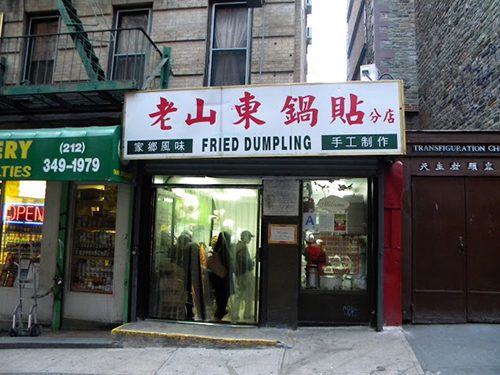
And though they were hardly ever a “secret,” this is the time when dollar dumplings became an embedded part of our lives (dollar slices didn’t become a widespread phenomenon until 2010.) Columbus Park’s strategic Chinatown border position made it a natural pitstop for anyone looking to get fed pork, bits of paper and dough for only $1.
2005-2010
It was the latter half of the 2000s, north Brooklyn had almost completed gentrifying, and brown chinos were the fabric of choice among these new residents of New York. If you skated anywhere — anywhere at all — in New York wearing brown chinos, you were expected to stop at the Columbus Park ledge and pay homage. Until it was put out of commission, a stop at Mambo Bar was also mandatory, lest you be shunned from earth tone skateboard society.
2007

Similar to how Ja$onwear had popularized something Puleo pioneered, a young Jake Johnson took a shot at expanding the appeal of the spot’s under-skated playground section — the same one that Puleo had first skated eight years earlier.
It didn’t catch on. Luis Tolentino back lipped the tall bench afterwards, but Jake’s contribution to the Columbus Park history books was a mere footnote. Until…
2009
Nearly a decade after A.V.E. gave the park’s eight-stair its first fling with a skateboard, Jake pulled the same trick, only switch. But as Shakespeare once said, “Even if I hit you once, you still part of my collection,” and A.V.E. reiterated that truth by skating the rail twice (with two different paint jobs) in the same video as Jake.
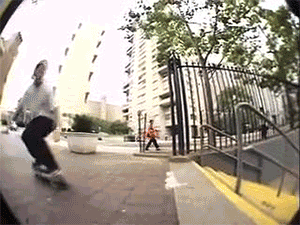
2011
Like all marginalized accomplishments in skateboarding, one of the most utterly I-never-even-thought-of-that-as-being-possible feats at Columbus Park was done by a redhead. Casey Rigney managed to ollie UP the wooden bleacher that Puleo 180ed in the Infamous video, short runway, curve-in, et al.
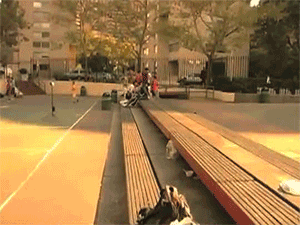
Lewis Marnell would switch flip down it with the benches still in tact soon afterwards, but the wooden slats did not last long.
2013
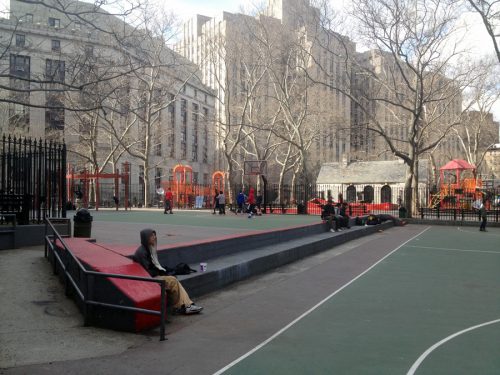
The Parks Department had a meeting and decided, “Ok, enough of this shit.” They removed the wooden portion of the bench and painted the remaining cement red in honor of this unheralded redheaded hero. This introduced two new ways of skating the spot, the most plebeian of which was over the ledge and down a would-be two block. The other was up the two block and over the ledge, demonstrated best in the obstacle’s early days by Kevin Maillet (best because I’ve overheard two groups of random kids showing up to the spot and saying “Kevin Maillet” after Paych came out.)
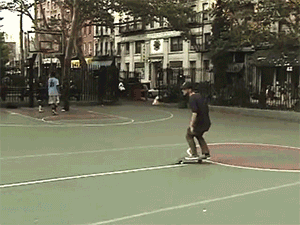
In years since, people began to switch flip UP it for Instagram clips, and redheads maintained an enduring legacy at the spot, e.g. Mike Arnold fucking switch backside 360ed over it in a clip last week.
2014
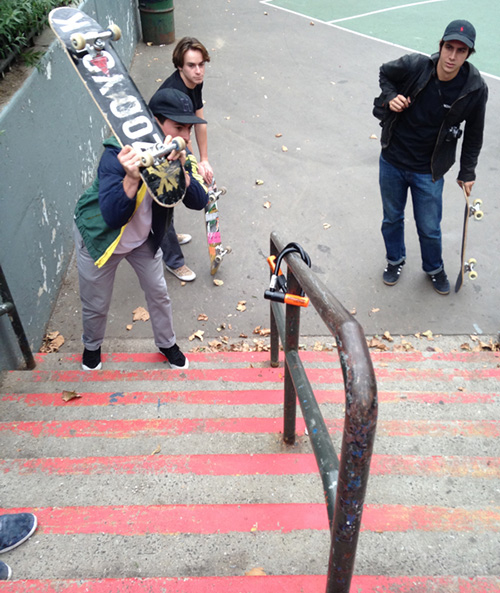
History came full circle. The spot became some of the most contested territory in Lower Manhattan, just as it had been nearly a century-and-a-half before. Statistically speaking, Columbus Park is the quickest shortcut to a cover or a blockbuster video part ender in all of Manhattan. Covers need to be protected, and enders kept covert. A spot that had been passed by hundreds of times in New York skateboarding’s formative years now feels the wrath of the fickle industry that helped bring west coast-level skating to the park in the first place. Thanks A.V.E. I guess.
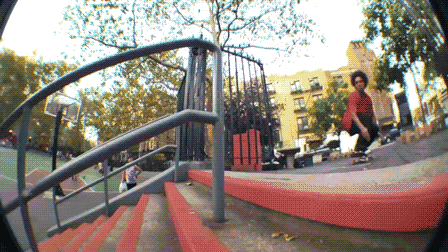
Previously: The Skateable History of Houston Park, The History of Skateable Seaport






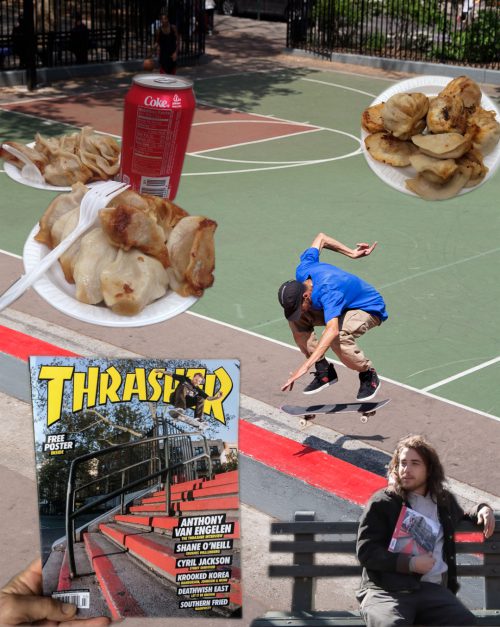
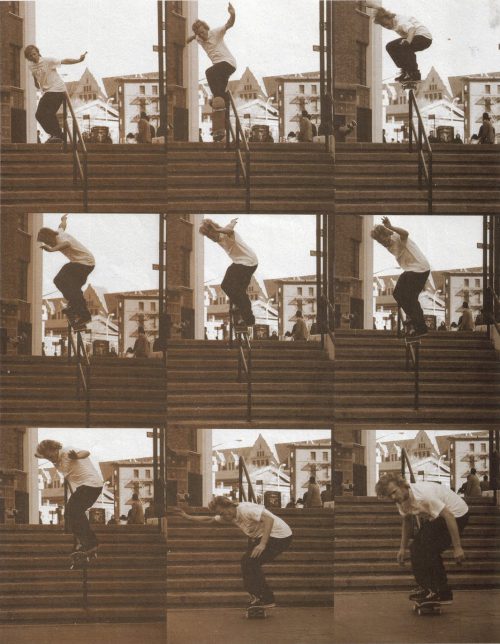
“Everyone knows that besides Scotty Schwartz’s iconic Heads ender, New York skaters didn’t begin landing handrail tricks until roughly 2016.”
I got burned :(
you should do one of these for the brooklyn banks seeing as how they’re open now at least unofficially
Puleo doesn’t get enough credit because he’s sort of a jerk. Everyone used to describe anything that wasn’t a ledge or a handrail as a “puleo spot”
No mention of Cyrus ollie over the handrail into the bank?!?
alba’s early grab to 5-0 ::chef kissing fingers::
C’mon Jerry…
http://quartersnacks.com/tag/qs-brooklyn-banks-week/
molly in Bushwick my guy. they also sell that fresh bagot meat , golden guernesy nipple milk, superwoman pressed blue and white dress pants, 80 grams of golden crackers on deck and 150 gram peanut bully jelly sauce. غوات فوكرthat nipple milk have you switch heelflipin for days.
Cyrus into the bank ayyyeeeeee
Nobody calls it columbus park everyone calls it red hubba
tompkins kid be trippin, the sign dead say colombus park – andrew
shut the front door! can anyone one foot japan?
Just ran into DMX hoopin at Columbus
Skateable Histories are sort of one of the best features on here. Do more please.